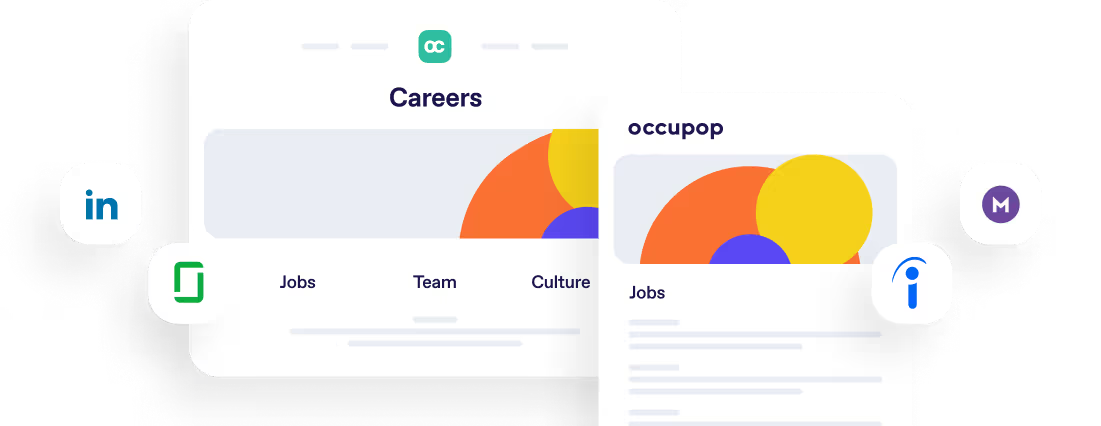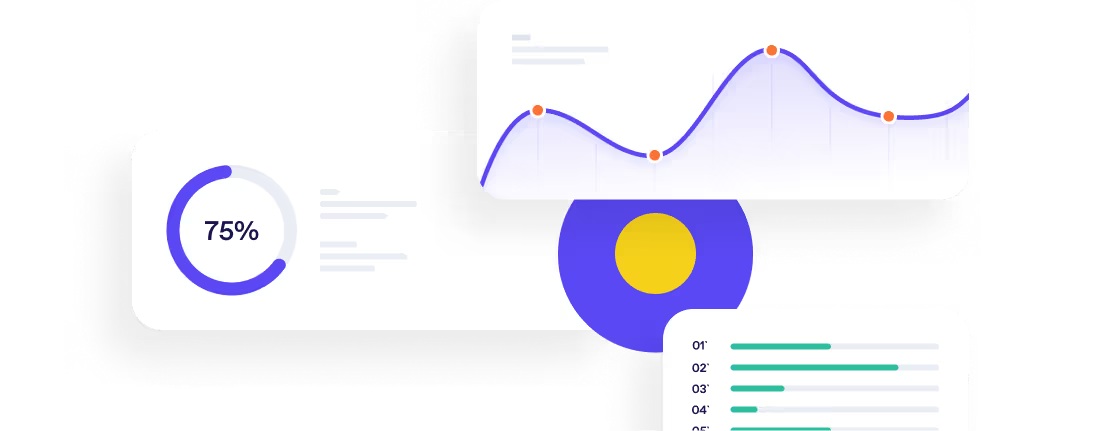5 Simple Tips to Improve Hiring Team Collaboration & HR Productivity



In an article published in Forbes, William Vanderbloeman wrote, “The best teams and smartest leaders all tend to have some reflection of collaborative hiring.”
Collaborative hiring is a method that utilises several colleagues, from the HR team to current employees, throughout the entire recruitment process. Also known as team-based hiring, this collaborative approach can help you develop quicker, better and more productive hiring processes.
Additionally, collaborative hiring has been linked to higher employee engagement, lower turnover and positive impacts to a company’s bottom line, according to the Financial Post.
While collaboration has the potential to help your company make better hires faster, it’s easy for teams of any size to get stuck in back and forth email exchanges and miscommunication throughout the process. In order to keep your hiring manager in the loop and your team members on track, we’ve rounded up “5 Simple Tips to Improve HR Team Collaboration and Productivity.”

1. Communicate on a centralised platform using hiring software
Cloud-based technology has allowed people in all industries to stay connected wherever and whenever. When it comes to recruitment, this type of technology can help HR teams communicate about candidates and keep track of each stage of the hiring process.
With modern recruitment software, you can interact with team members on a centralised platform in real time, so everyone has the advantage of immediate and shared feedback, whilst keeping everything GDPR compliant. This combats the issues of waiting to hear back from team members or misplacing emails, which can add hours to the recruitment process and can leave you potentially at risk for a data protection breach. In fact, research by Jobvite found that it usually takes 17 hours to collect interview feedback from someone on the HR team; on a centralised platform, this could take seconds.
Recruitment software also provides full visibility to the entire team from start to finish. The hiring manager can assign tasks to individual team members, and each member can track where they are with each candidate. Instead of outdated decision-making techniques such as long meetings or complex email exchanges, this centralised platform allows you to move candidates between stages with a single click.
2. Make team decisions about hiring criteria
While the preparation stage of recruitment is often limited to just the hiring manager or HR team, having a wider range of input can be extremely beneficial when creating candidate personas and hiring criteria. This is because colleagues from other teams may know more about different aspects of the position or company culture.
In order to create an informed hiring process and avoid mistakes, involve everyone that will have contact with the new employee from the very start of the recruitment process. Making an effort to collaborate on the job description and job requirements early on will ensure that everyone is on the same page for the rest of the process. It will also help you provide more well-rounded and accurate advertisements for the position.
In addition to gaining insights from different team members, this collaboration during the preparation stage is also your chance to provide simple training for any colleagues who aren’t familiar with HR practices or the hiring process. This will help everyone source the top talent, create a positive candidate experience and keep any unconscious bias in check.
INSERT-CTA
3. Create short and long term goals using hiring analytics
In order to boost your hiring team’s productivity and keep everyone motivated, use metrics to track each stage of the hiring process. Measuring your recruitment process will allow you to track the performance of your strategies and your team members, as well as give everyone a shared set of goals to work toward together.
You can use recruitment software to analyse the data collected during each stage of the process. This will reveal what stages need improvement, and also keep team members in the loop. Creating measurable goals based on this data gives your team something tangible to work toward that they can also measure themselves against.
Set two types of goals for your team to achieve:
- Short term goals are beneficial for helping individual members or smaller groups stay up to date with their tasks. Set goals for conversion rates at each stage of the process, as well as the average number of days a candidate spends in each stage.
- Long term goals, on the other hand, should be shared by your entire team as a way to bring everyone together. These goals could be time-to-hire, cost-to-hire or simply hiring the best candidate.
Being specific about these goals will give your team a shared purpose during the recruitment process. According to research by MIT, 94% of high performing organisations focus on instilling a common sense of purpose among employees. In order to get everyone on your team to perform their best, implement quick morning huddles or a group message where you can frequently refocus your team’s energy on the goals at hand.
4. Conduct group digital interviews
While traditional interviews can be an extensive process for both the hiring team and the candidate, especially if multiple interviews are conducted, digital interviews are both productive and collaborative. This is because they are easy to schedule and allow multiple members of your team to sit in during each session.
Recruitment technology can help you both schedule interviews with candidates and actually interview those candidates. For example, Sonru is a programme that automates online video interviews to help you screen candidates from any location or time zone. With Sonru, candidates record their answers to your customised questions, creating a video that you and your team members can play back and watch at any time. This is especially beneficial if you are hiring freelance or remote workers, and it saves you the cost and time of scheduling and preparing for an interview in your office space.
Digital interviewing platforms also allow more members of your team to provide feedback about a candidate before you decide to move forward with them. Whether your hiring team is in the office or working remotely, you can make the interview process more efficient by linking multiple members into a single screening call or sharing a candidate’s video answers with the entire team. This way each team member can simultaneously assess the candidate based on their individual expertise. For example, your hiring manager can assess a candidate’s communication skills, while a current employee can determine their culture fit. This gives you a more informed and well-rounded evaluation of each candidate. That’s probably why 58% of HR professionals would be willing to hire a candidate based on digital interviews alone, according to a study by Bersin.

5. Assess candidates based on a predetermined set of skills
During or after the first interview, your team should assess candidates based on a predetermined set of skills and qualifications that your entire team agrees on. This will help keep everyone on the same page about candidate criteria and reduce bias during the interview process.
In the same way that your team should collaborate on the hiring criteria at the beginning of the recruitment process, the hiring team should also determine the hard and soft skills that will be assessed during the interview process. Before interviews, your team should narrow this criteria down to your must-haves and choose a quantifiable way to measure each skill.
By focusing on specific criteria, your hiring team will stay focused during the interview and only assess the skills that truly matter for the position. This will keep both experienced and inexperienced interviewers from being biased in their decision and help candidates receive a fair interview. In fact, the validity of a typical unstructured job interview is only around 20% because of bias, emotion and inconsistencies during the interview process, according to the Harvard Business Review. Having a structured way to evaluate each candidate will help your team make a more valid and informed hiring decision, while also ensuring that every candidate has a positive and considerate experience.
INSERT-LINE
Involving your team at each stage of the recruitment process, from choosing hiring criteria to assessing each candidate’s fit, will help you hire the best candidate for the position and for your company culture.
If you’re ready to start building your recruitment dream team today, Occupop is here to help! Our recruitment software offers a centralised platform for your entire team to connect, collaborate and communicate about each stage of the hiring process, and you can even share individual tasks with each member. With our AI technology offering a helping hand during each part of the process, including sourcing CVs and scheduling interviews, your team can shave off up to 4-5 hours a week. That means you have more time to focus on welcoming your new hire to the team!
Get started for free today at www.occupop.com and subscribe below to get more HR tips and tricks sent straight to your inbox!
Summary Points
5 simple tips to improve hiring team collaboration HR productivity:
- Communicate on a centralised platform using hiring software
- Make team decisions about hiring criteria
- Create short and long term goals using hiring analytics
- Conduct group digital interviews
- Assess candidates based on a predetermined set of skills
Simple. Beautiful.
Recruitment Software.
HR updates sent straight to your inbox
You might also like...


Manage your entire hiring process simply, from engagement to management, hiring and onboarding







Simple. Beautiful.
Recruitment Software.
Recruitment Software.






